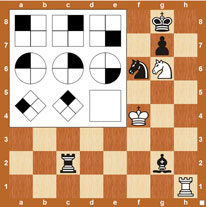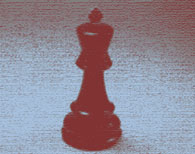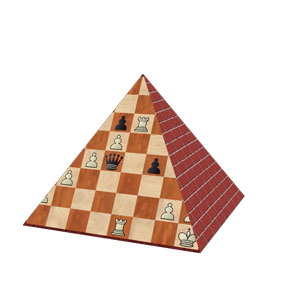Latest Posts - Page 138
Many people are curious if there is a correlation between one’s chess rating and IQ score. I did some information research, compiled facts and data and decided that it should be a good time to write an article about IQ score and ELO rating correlation.
If there is a correlation between IQ and ELO it would be also interesting to know how strong it is. Is it true that only people with high IQs can be strong chess players? Do all strong chess players have high IQs? We will try to answer those and other questions throughout this article.
The midgame is the most complicated and difficult part of a chess game. All of the pieces are in play, and there are complex maneuvers and tactical battles. The game sometimes ends in the midgame. There are three main strategies for playing the midgame.
1) Attack: To win a chess game you must attack. If you hang back and let the opponent do all of the attacking, then you will never win. Sooner or later your defenses will crumble and one of the opponent’s attacks will break through and beat you. You must attack to win. Look for weaknesses to attack. It is much easier to attack weaknesses than it is to attack strengths.
Today’s article will mostly be aimed for novice chess players. Since it is hard to define what novice player really means we will assume that’s somewhere around 1300 ELO and below rating-wise.
There are about 600-700 million people in the world that know how to play chess.That’s a truly amazing number, making chess one of the most popular games on our planet.
Tactics are moves that help you win pieces. When you win pieces, you gain points and take the lead in material. When you take the lead in material, you have a better chance to win the game. Tactics also make immediate threats to gain advantage. Sometimes, just the threat to use tactics can improve your position, or weaken the opponent’s position.
Tactics are the heart of chess. They are always there, all of the time. Whether or not you can find tactics is another matter. You must know what to look for before you can find tactics.
I already have written a few articles about online chess. The one of them is called Online Chess vs. Over the Board Chess, which you may want to check out for comparing these two animals. The other one was a little bit more pessimistic (or realistic?): 11 Worst Habits of Chess Bullies.
It talks about different forms of unsportsmanlike behavior in online chess. Today we will try to exploit the subject of online chess even further and come up with strategies that can help you to become a more successful online chess player.
In his lecture “The Way of Art” Joseph Campbell reminds that James Joyce defined proper art as “static”—that is art which does not move you to desire, to loathe or to fear the object, but rather to be in awe of it. Campbell then goes on to St. Thomas Aquinas’ description of the aesthetic experience, which involves three phases: Integrity (wholeness, unity), Harmony, and Clarity (radiance, fascination).The King in chess is indeed a symbol of unity and wholeness and the other pieces are not separate entities but rather parts of “The One Thing”, as Campbell put it. Here a point can be made about the importance of boundaries. Campbell advises: “you’ve got to put a frame around you and become One Thing.”
Today I will talk about a few things that you can do while playing chess that may significantly increase your winning chances. I believe that the most effective way to get good results in chess games is to be systematic and to use the same technique before each move.
By training yourself on how to look at the chess board, how to see things and what details to pay attention to the most will help you to simply play better chess and win more chess games.
Is it possible to teach a child to play chess while they’re still in diapers?
Children can learn chess very early, some as early as two-years-old! The key is to teach them at the correct speed for them. It will vary from child to child, so the educator must be alert to the subtle indicators that a child is ready to continue on.
It is important not to thrust all six pieces into your child’s hands, explaining to him or her how they each move in a few minutes, then show them how to set up a chess board and expect them to play.
Today I will be doing a review of Chess King Software which is actually a package that includes a chess engine, chess games database, and also a collection of tactics problems. The point of this review is to introduce Chess King software to the readers, discuss its features, talk about its “pros” and “cons”, compare it with other available chess programs and of course be as objective as possible in this review.
This is part 1 of the two-part review series and I will talk about the basic things Chess King has to offer.
The endgame is the final phase of a chess game. It may seem easy since there are very few pieces left, but often it is not. Some of the most difficult play in chess comes in the endgame. Good endgame technique is the sign of a strong chess player.
In the endgame, most of the pieces have been captured. All that remains are the kings, some pawns, and maybe a few pieces. The pieces are usually not enough to win the game, though. To win in the endgame, you must use your king and your pawns.

















